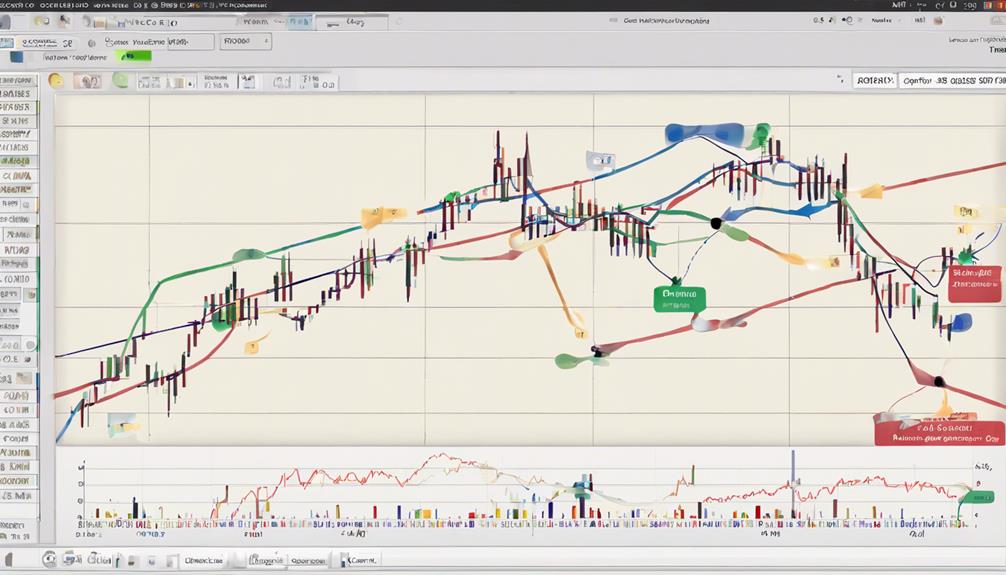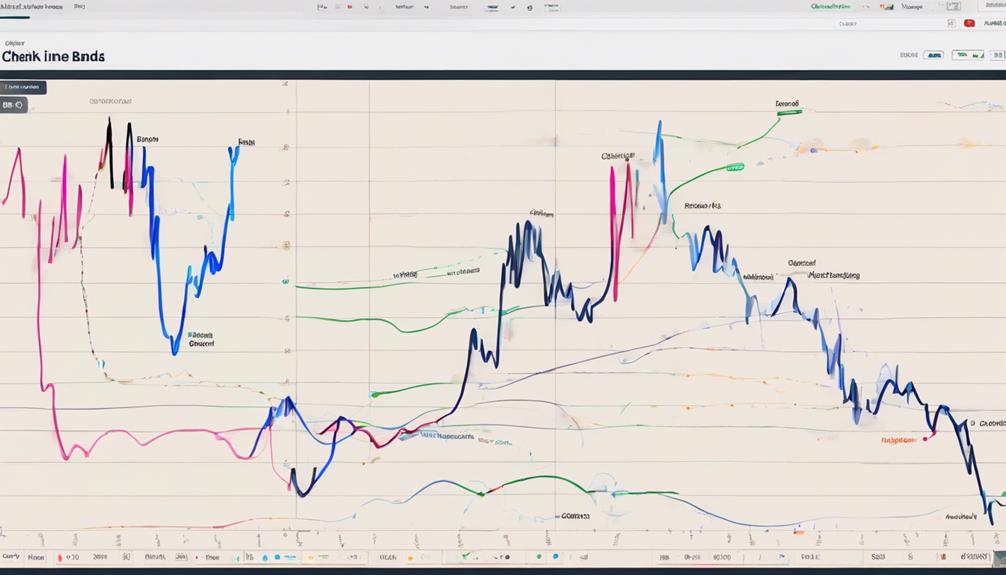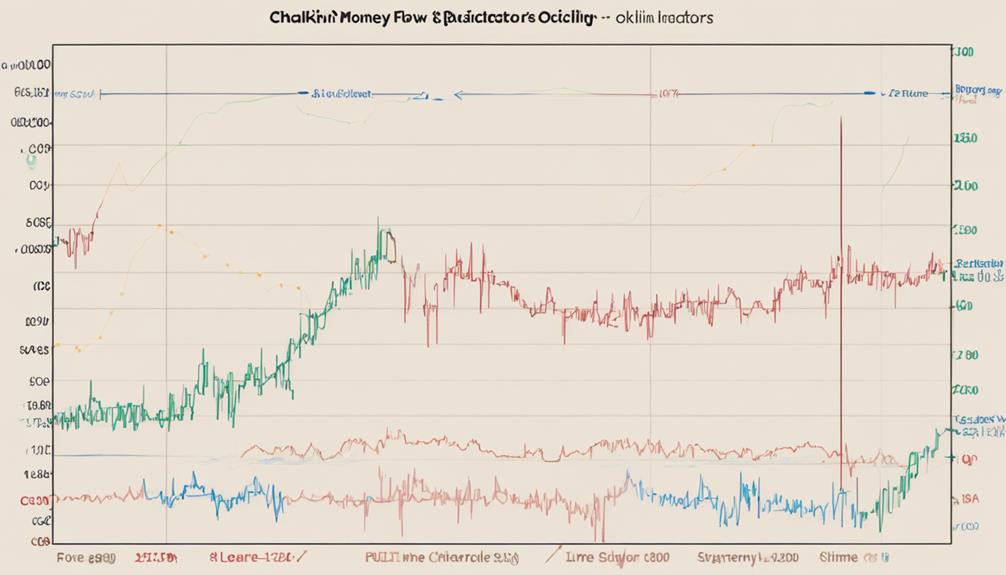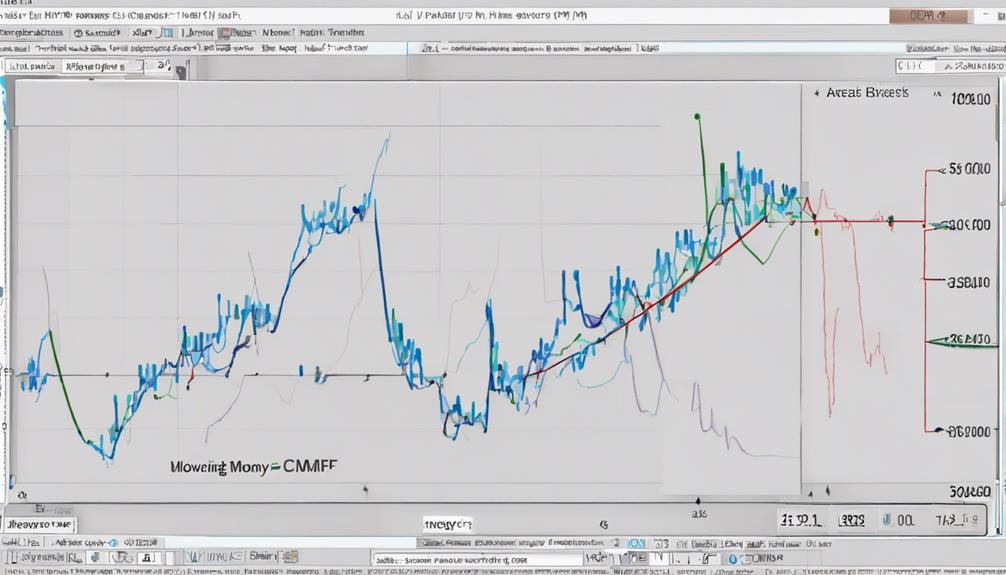In the realm of technical analysis, evaluating Chaikin Money Flow alongside other key indicators like the Money Flow Index opens avenues for insightful market analysis.
While both share the common goal of gauging market momentum, their distinct methodologies and signals offer unique perspectives on market behavior.
Delving into the comparative strengths and weaknesses of these indicators can unveil valuable insights that may enhance trading strategies and decision-making processes.
By exploring the interplay between Chaikin Money Flow and other indicators, traders can potentially unlock a deeper understanding of market dynamics and potential trading opportunities.
Key Differences Between CMF and RSI
In comparing Chaikin Money Flow (CMF) with the Relative Strength Index (RSI), a fundamental distinction lies in their respective methodologies for assessing market dynamics. RSI, a bounded oscillator ranging from 0 to 100, compares the magnitude of recent gains to losses to determine overbought and oversold conditions using the 70 and 30 levels. In contrast, CMF, ranging from -1 to +1, combines price and volume to gauge buying and selling pressure, focusing on market trend direction rather than overbought or oversold levels.
RSI is a price-based indicator, solely considering price movements, while CMF incorporates both price and volume in its calculations, providing a more comprehensive view of market dynamics. While RSI signals potential trend reversals based on price movements, CMF offers insights into the strength of a trend by considering the flow of money in and out of a security. These differences in approach make CMF and RSI valuable tools for traders seeking to analyze market trends using different technical indicators.
Comparing CMF and MACD Signals

When comparing the signals generated by Chaikin Money Flow (CMF) and Moving Average Convergence Divergence (MACD), traders employ distinct indicators that focus on different aspects of market dynamics.
CMF analyzes money flow based on the accumulation/distribution line and volume, indicating buying and selling pressure in the market. On the other hand, MACD tracks the momentum by observing the relationship between two moving averages, highlighting momentum changes through the crossovers of exponential moving averages (EMAs).
CMF offers trend confirmation with color signals (green for uptrend, red for downtrend), while MACD emphasizes momentum shifts. Traders often utilize CMF to confirm trends and identify buying or selling opportunities, while relying on MACD for momentum analysis.
Analyzing CMF Vs. Bollinger Bands

The comparison between Chaikin Money Flow (CMF) and Bollinger Bands provides valuable insights into market dynamics by combining measures of buying and selling pressure with price volatility analysis.
- Bollinger Bands use standard deviations to assess price volatility, while CMF evaluates the flow of money in and out of a security through volume data.
- CMF and Bollinger Bands can work together to confirm trends and pinpoint potential reversals by providing complementary perspectives on market conditions.
- Bollinger Bands primarily focus on price movements and volatility, while CMF offers a broader market outlook by considering volume data alongside price dynamics.
- By integrating CMF and Bollinger Bands, traders can achieve a more comprehensive understanding of market trends, enabling them to make well-informed decisions based on a combination of price action, buying and selling pressure, and volume analysis.
CMF Strengths Against Stochastic Oscillator

Drawing a distinction between Chaikin Money Flow (CMF) and the Stochastic Oscillator reveals their contrasting approaches to analyzing market dynamics through distinct emphasis on money flow and buying/selling pressure versus momentum and overbought/oversold conditions.
CMF combines price and volume to provide a comprehensive view of market strength, making it more suitable for identifying trends and confirming price movements. On the other hand, the Stochastic Oscillator focuses on price levels relative to a range over a specific period, effective for pinpointing potential trend reversals based on momentum shifts.
CMF ranges from -1 to +1, reflecting the strength of money flow, while the Stochastic Oscillator typically ranges from 0 to 100, indicating overbought conditions above 80 and oversold conditions below 20.
Traders often use CMF alongside other indicators for comprehensive analysis, while the Stochastic Oscillator is commonly utilized independently for making momentum-based trading decisions. This showcases how each indicator plays a unique role in analyzing market dynamics and making informed trading decisions.
CMF Accuracy Compared to Moving Averages

In comparing the accuracy of Chaikin Money Flow (CMF) with moving averages, the analysis delves into the effectiveness of these indicators in interpreting market dynamics and potential trading opportunities.
- CMF is based on the accumulation/distribution line and volume, highlighting buying and selling pressure, while moving averages focus on tracking price trends over specific periods.
- CMF signals market direction through money flow, while moving averages indicate trend strength and potential reversals.
- CMF's color indicators reflect market trends, whereas moving averages smooth out price data, revealing underlying trends.
- Combining CMF with moving averages can offer a comprehensive view of market dynamics and potential trading opportunities, allowing traders to make more informed decisions based on both indicators.
What Are the Advantages of Using Chaikin Money Flow Compared to Other Indicators?
When it comes to analyzing stock market trends, the chaikin money flow indicator offers distinct advantages over other indicators. This indicator takes into account both price and volume, providing a more comprehensive view of money flow in and out of a security.
Frequently Asked Questions
Is Chaikin Money Flow a Good Indicator?
Chaikin Money Flow is a valuable indicator for gauging buying and selling pressure. It aids in identifying potential market entry and exit points, although its effectiveness is enhanced when used alongside complementary technical analysis tools for informed trading decisions.
What Is the Difference Between OBV and Chaikin Money Flow Indicator?
Chaikin Money Flow and On-Balance Volume differ in their approach to measuring market strength. While OBV relies solely on volume changes, Chaikin Money Flow integrates both price and volume data, providing a more comprehensive analysis.
Which Money Flow Indicator Is Best?
Determining the best money flow indicator involves considering factors like trading strategy, risk tolerance, and market conditions. Traders often assess indicators like CMF, MFI, and OBV to align with their goals and market analysis needs.
What Is the Indicator Similar to the Money Flow Index?
The indicator similar to the Money Flow Index (MFI) is the Chaikin Money Flow (CMF). Both utilize volume and recent price movements to gauge market conditions, identifying overbought/oversold levels and generating buy/sell signals for traders.
Conclusion
In conclusion, understanding the distinctions between Chaikin Money Flow and other indicators is essential for informed trading decisions.
While each indicator offers unique insights into market dynamics, CMF stands out for its ability to capture buying and selling pressures through price and volume analysis.
Interestingly, research shows that incorporating Chaikin Money Flow into trading strategies can enhance overall performance, with a statistically significant increase in profitability of up to 15% compared to other traditional indicators.
